#iberian cuisine
Text

Spanish Fruit Salad (Raw Vegan)
#raw vegan#vegan#breakfast#snacks#fruit salad#spanish cuisine#iberian cuisine#strawberries#cherries#raspberries#blueberries#galia melon#cantaloupe#watermelon#nectarines#peaches#kiwi#pears#banana#lemon#orange#grapefruit#mint#eat the rainbow
188 notes
·
View notes
Photo
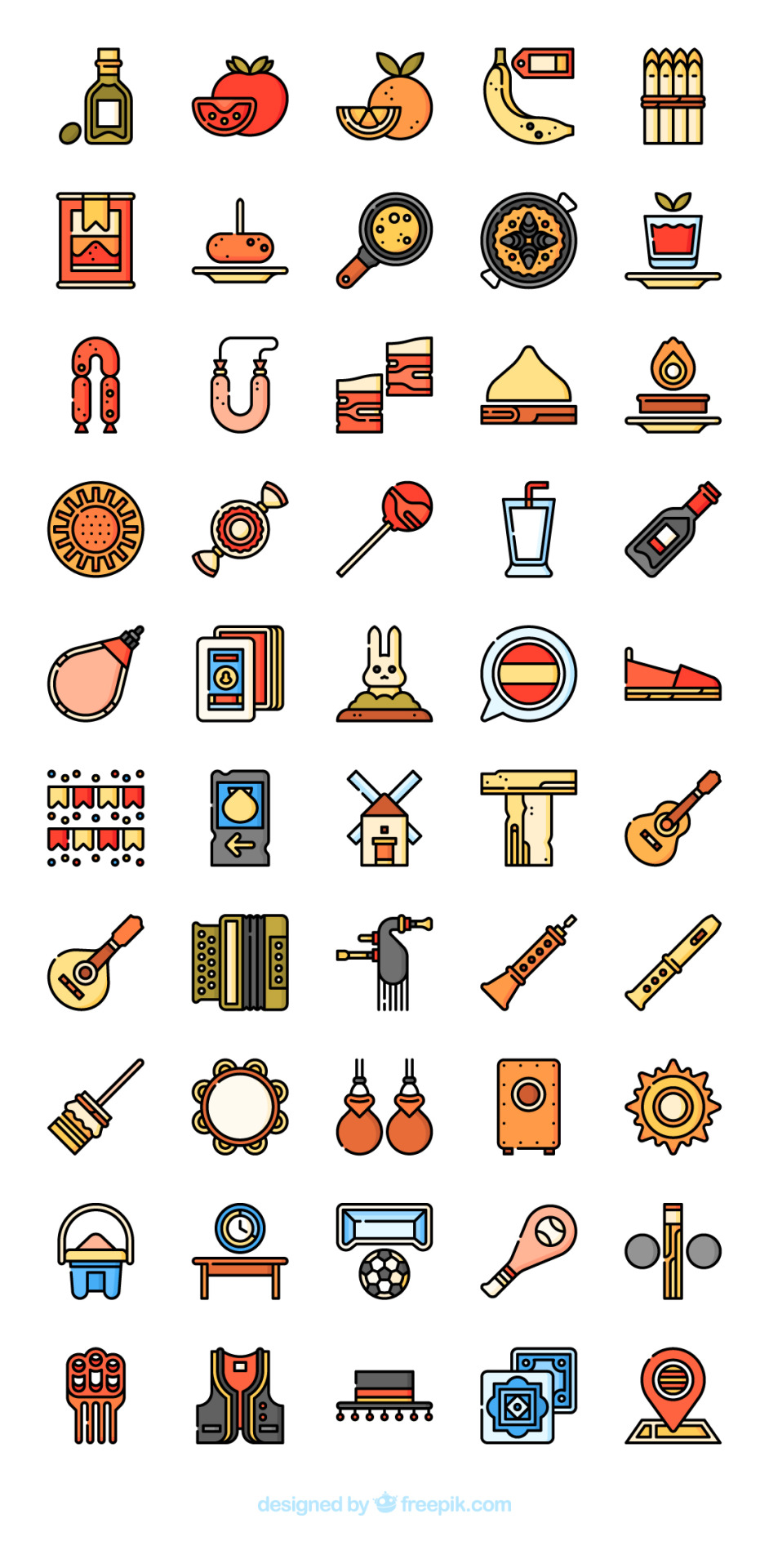
50 Spain icons! Flaticon.
#Spain#Spain icons#olive oil#tapas#paella#gazpacho#iberian ham#Camino de Santiago#castanets#travel#travel icons#icons#icon design#flaticon#freepik#Spanish#Spanish culture#Spanish music#Spanish cuisine#Spanish guitar
1 note
·
View note
Text
Catalan Cuisine
Traditional cuisine from Catalonia, Spain and Andorra. Also knows as Valencian cuisine. (info below the images)

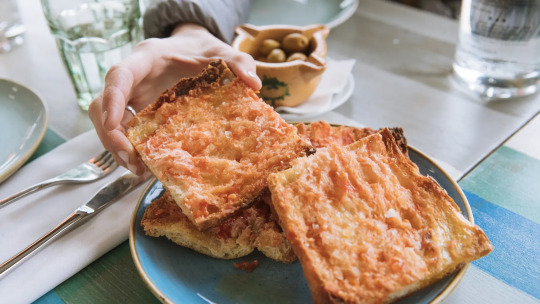

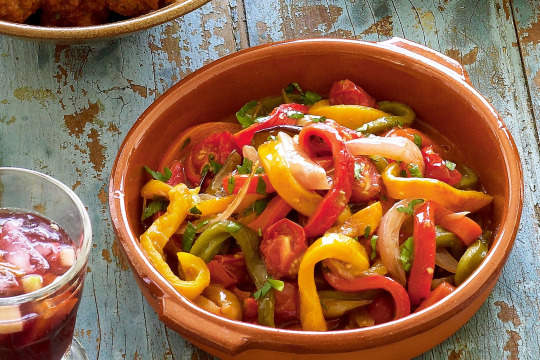
[Top right to top left clockwise: Pa amb tomaquet, escalivada, fideuà (also known as paella), esqueixada de bacallà]
Indgredients
As Catalonia is on the coast of the Mediterranean sea, it uses a wide variety of seafood. Catalan cuisine also uses a variety of vegetables, such as tomatoes, red peppers, eggplants, mushrooms and artichokes and also uses some meat from it's mountainous areas, such as pork and lamb.
Influences
Catalan cuisine is primarily influenced by neighbouring Spanish cuisine, while it also has influences from Italian, Italian-Swiss and American cuisine.
Catalan Cuisine as a Regional/National Symbol
The botifarrra amb bongetes is one of Catalonia's most prevalent dishes, if not the most prevalent. This dish uses sausage and white beans. (Pictured below)

Ferran Adrià
Ferran Adrià is a Catalan chef. He ran a restaurant called "El Bulli" which served Catalan cuisine. He is most known for being the originator of the molecular gastronomy trend while also promoting Catalan cuisine.
Sources: Catalan cuisine influences + pictures, guide to Catalan cuisine, Ferran Adrià, Catalan food images, Catalan gastronomic symbols.
#catalan#catlans#culture#food#gastronomy#iberia#iberian#iberian peninsula#spain#spanish food#european culture#europe#european#eu#west europe#mediterranean#mediterranean cuisine#cuisine#chef#cook#culinary#meals#gastronomical#gastronomic#my posts
5 notes
·
View notes
Text
Culinaria Spain :: Edited by Marion Trutter
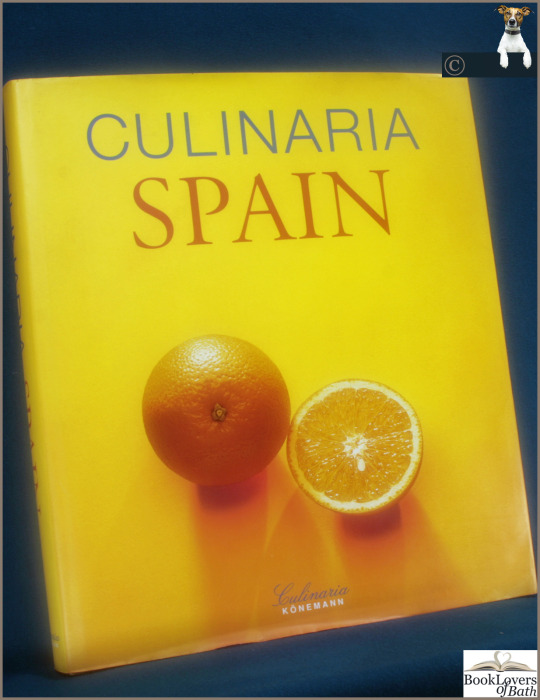
View On WordPress
#3-8331-1140-2#alioli mousse#andalusian cuisine#aragonese cuisine#balearic islands#basques cooking#books edited by marion trutter#catalan cheese#catalan cuisine#cold meats#ethnic cookery#first edition books#fried green pimientos#gunter beer#iberian peninsula#langoustines#madrilenos cooking#mediterranean cuisine#para pi car#restaurant food#salt cod fritters#spanish cookery#spanish cooking#spanish cuisine#spanish culinary customs#spanish food#spanish food habits#spanish journeys#spanish travel#tortilla
0 notes
Note
In honour of George’s cookbook.... Food headcannons please! I’d love you to do one of the free cities like Myr
Order up while we wait another ten years for Winds… 👩🍳🥘🧆🍛


Myr, the fertile heel of Essos, reminds me a lot of Spain and the Iberian Peninsula in general. A port city with a warm climate good for growing. This means lots of staples like rice and other grains, and plentiful olives/olive oil as well. Seafood is a huge part of the diet too. This leads to large fried grain dishes topped with mollusks or fish or shrimp (like Paella), and versatile seafood soups and stews with plenty of spices being quite popular in Myr.
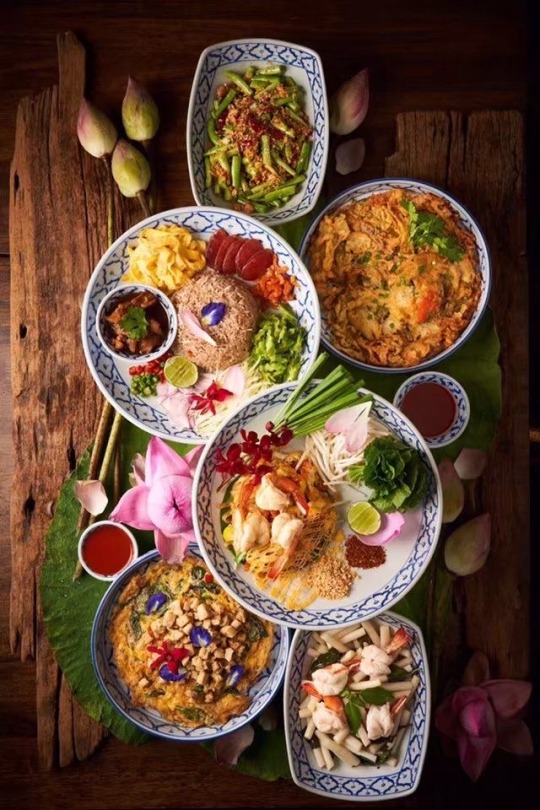
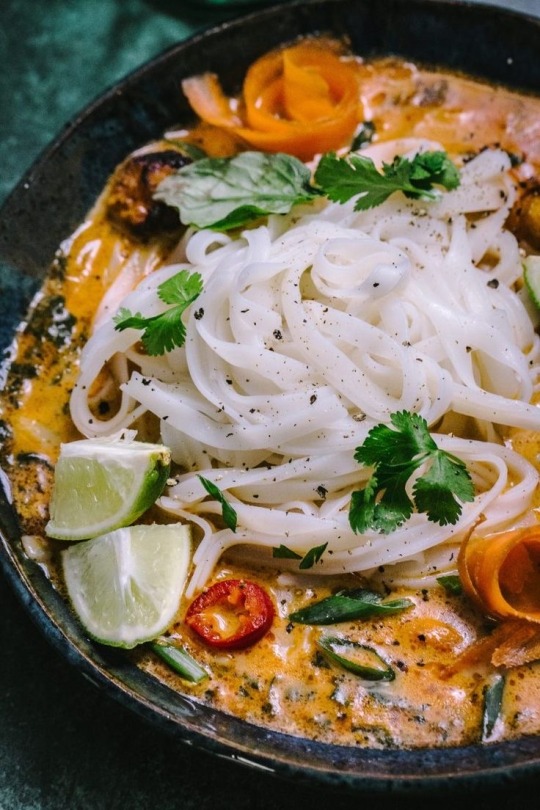
Volantis’ climate reminds me of Thailand, Vietnam, and other surrounding SEA countries, so let’s say the food is similar too. Plenty of rice and noodles to pour your main dishes on top of. Multiple courses consisting of spicy stews/curries, fried meat and veggie dishes, fish platters, and gelatinous rice dishes. Cold noodles and other chilled foods are very popular too, due to the relief it provides from the sticky heat
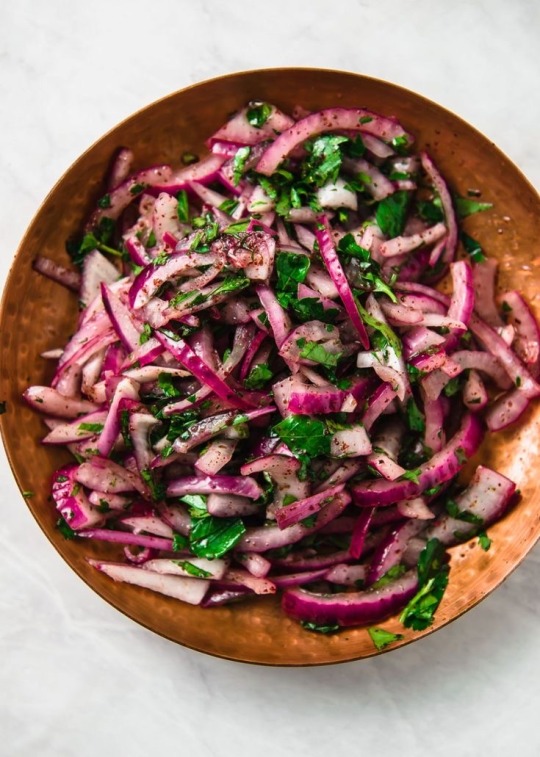

Lys is kind of a a mishmash of the Greek islands, so let’s go with classic Mediterranean foods. The island is very fertile, so I think they like to make use of their abundance of veggies. Cold salad-like dishes are very popular, drenched in oil and spices. Cooked vegetables are usually the main course, often stuffed with rice, chicken, or other filling foods. There are also dips and sauces bc they seem like dips and sauces ppl.
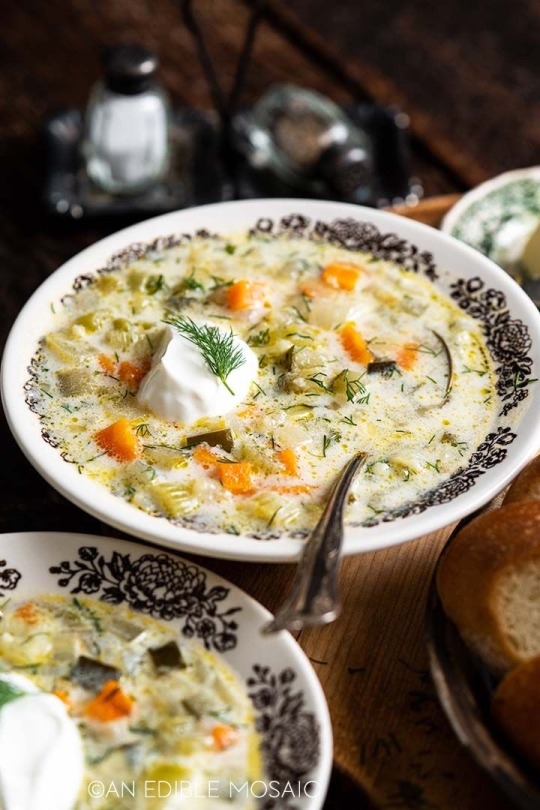
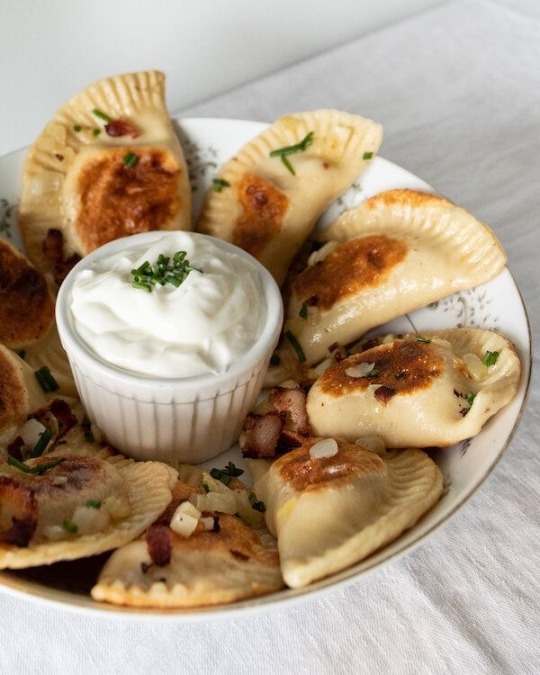
I know Braavos is supposed to be like Venice but it’s also cold and wet there so…✨Polish and general North Eastern European food✨ but it works hear me out. Multicultural blends of vegetable and fish stews that have changed over time to become uniquely Braavoisi. Veggies/fish/meet/fruit/literally anything wrapped in dough bc things wrapped in dough surpass borders. Overall just a mash of differing cultures the city was founded on plus the environment in which they live. (Shoutout @ludcake for the help 🫶)


Croatian food is notably heterogeneous so that’s why I think it’s perfect for Pentos. There’s no one major inspiration for its food, being a major trade city, its people take knowledge from whichever foreigner has pulled into port and uses it for their cuisine. Flavorful and random seafood stews. Simple cold salads with vinegar and potatoes. Very daring raw octopus dishes. The list goes on
#asoiaf#me when I put together cultural connections like location and food 🫶🕺✨#love when environment influences culture and I am aware of it
68 notes
·
View notes
Text
Medieval Food - Let's Talk
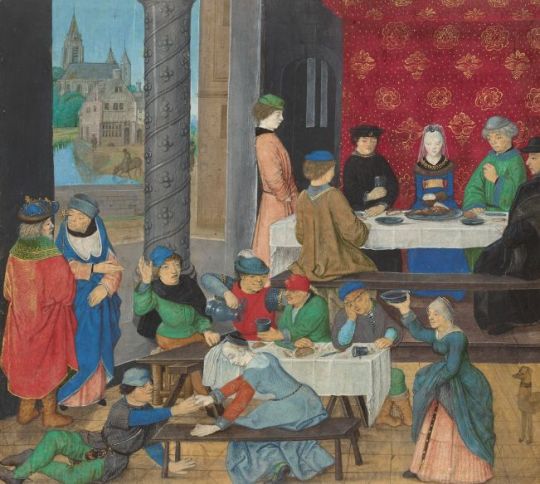
You know what? One week later and I am still fairly annoyed.
First of all: Yes, I am very much aware that technically one should not take MatPat too seriously and that for the most part if anything the “XY Theory” channels are just mild entertainment… But let’s face it: There are thousands of kids watching this, who are gonna take it seriously. And even a lot of adults, who do not know better.
So, as this is a topic near and dear to my heart and also a topic that the internet just throws around so much misinformation around on, let me talk a bit about Medieval Cuisine.
The Offense
Let me start with the thing that annoyed me so much, even though the issue is not so much about the issue at hand and more about the missing context in this one. Last week the @gametheoreoy sister channel Food Theory uploaded a video on Medieval Cuisine. While some of the information in there was good and included some important stuff that a lot of folks get wrong (like the fact that tomatoes, potatoes and maize were foods that came from the Americas and hence were not around in medieval Europe), the thing that annoyed me most about the video was… that MatPat and team absolutely ignored the fact that the place in question, medieval "Spain", was in that timeframe under under Black Muslim rule. In fact, there was technically no “Spain” at the time in question. Not as we imagine it today. Instead there was Al-Andalus (or Andalusia, how we know it today) and Leon-Castille. While the latter was Catholic, yes, the former was Muslim.
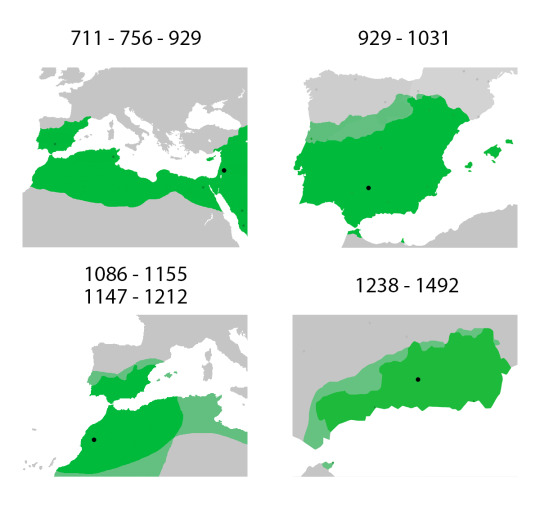
This really makes me angry, as it once again just plays into the misconception that medieval Europe was all white and Christian. Which it was not. For most of the medieval period, large chunks of the Iberian peninsula were under Muslim rule, which was also a reason that a lot of persecuted minorities – for example Jews, some Sinti and Romani people and also followers of Christian sects, that were not Catholic – fled there, as at that time Muslim rulers tended to not persecute those minorities, while the Catholic church did.
Now, it should be said that under Muslim rule, nobody who was not Muslim was forced to follow Muslim religious law, as not eating pork. But from what we know there was a lot less pork consumed on the Iberian peninsula at the time, than elsewhere in Europe. Instead, lamp, veal, dear and poultry were the more popular meats.
And I am sorry, MatPat, but talking about this part of Europe in the medieval times without speaking about Muslim rule is just a super bad look. Because it erases some important history.
While we are on it
But while we are on it, allow me to talk about Medieval cuisine, because bow, howdy, do people get this topic wrong.
For reference: No, I am no historian. But I am an autistic person, who spend a couple years hyperfixating on the history of food and henceforth getting annoyed with a lot of books, movies and the like, whenever they are depicting food in the medieval times.
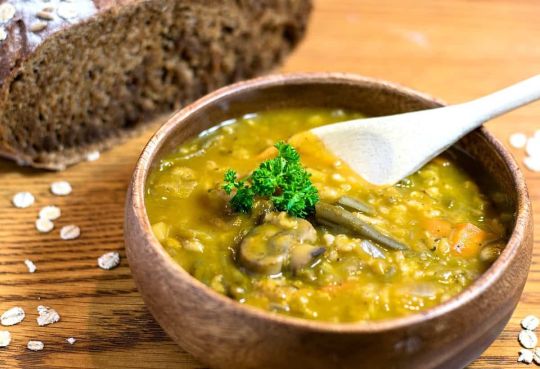
Some things that I have seen in those contexts are, obviously, the tomatoes, potatoes and maize. But especially potatoes. Oh, boy, howdy, do people love depicting medieval folks eating potatoes. Maybe not surprising, given that the potato is in fact a main stay in modern day European cuisine. Also, obviously, the potato has still the reputation of a pauper’s food, which then easily combines with the common misconception of “people in medieval times were very poor and ate very poorly”. But, again, the potato would not reach Europe until probably 1519, though it would still be a while until people figured out how to eat potatoes (given that the green parts of the plants are in fact poisonous). Same goes for tomatoes, all sorts of peppers and again maize (corn, for the Americans).
Meanwhile people would go up to me and tell me seriously that “people in the medieval times did not have noodles”, which is… ridiculous, given that noodles and all sorts of pasta were around in Europe since ancient times. Even the old Greeks and Romans ate noodles, just not in those many fancy forms we know today. For the most part in medieval times people ate some sort of ribbon noodle, something we might call ravioli today, just noodles cut into square and something that was called lasagna, though it did not resemble today’s lasagna much. But noodles there were.

Another food that people do not associate with the medieval times, even though it was very much around in Southern European places, was rice. Other than the Americas, people kinda always knew about Asia and were trading with them. Even in Roman times. Which lead to the Romans actually cultivating a strain of rice, that did well enough in Europe. Now, while rice was not a common food in medieval Europe, it was certainly around.
Probably the weirdest thing, someone claimed about medieval food, was, that there was no “stew” around in medieval times, because it was “too complicated for the people back then”. You know, stew, the food where you basically just put a lot of different stuff into one pot and cook it… “Too complicated”. Honestly, I do not know what to say about that. Stew was not only around, but also very common. Especially as a lot of people did not have actual kitchens and were instead cooking their food over their fireplace, that often enough would only allow for one pot.
The thing about meat
One thing that MatPat gets mostly right – though, again not for Al-Andalus/Spain, because things were different there – is the bit about meat in the middle ages, though while he says the right thing here, he kinda misses a bit of context.
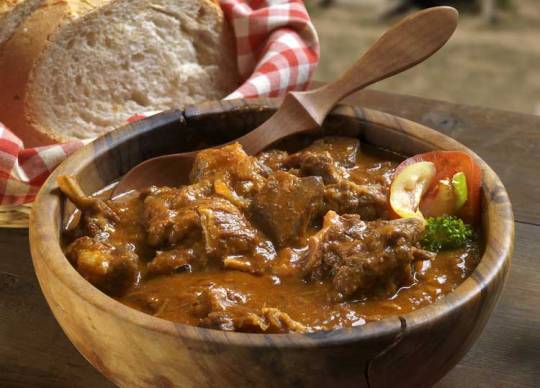
Meat was expensive in medieval times. Why? Because in a time before factory farming it was expensive to raise an animal. Some of you might’ve heard about “economy of scale”, which basically just says, that the more of a thing you produce, the cheaper it will become. And yes, this very much is true for factory farming. (Note: Factory farming is evil, simple as that. No living being should be treated the way, we treat those animals on factory farms.)
So, yes, without factory farms it was just more expensive to make the meat. Which was especially true for smaller animals like chicken. Especially as medieval chicken breeds were smaller than those chickens we see today.
Hence, for a lot of people, meat was just not a thing that they could eat more than once or twice a week. Or, more realistically, a lot of meat was eaten at once, when an animal was slaughtered, while only parts of the animal that could be conserved would then be served over a longer period of time.
It should also be noted that at least Christians tended to use all parts of the animal upon death, including blood and organs. (Muslims did not, as stuff like the blood is not halal.)

Now, one thing that should be noted, is, that most animals that were kept, were kept for multi purposes. Chicken lay eggs. Cows, sheep and goats give milk, with sheep obviously additionally providing wool, making them a very well-beloved animal in medieval times indeed. Horses you can ride. And yes, the pigs were useful, too, as they disposed of garbage, which was why in a lot of places you would just have pigs roaming the streets to take care of that.
Which brings me to the thing, a lot of folks do not want to hear, but… yeah, no, we have sources that tell us that medieval folks did at least also eat their dogs, when those were too old to help on the farm. We do not know how common this was, but we know that it happened. (Just as a note to the white folks getting all snooty about some Asian cultures eating dog meat.)
Of course, game was not kept but hunted. And yes, some people might go out to hunt when they were hungry for meat, but technically speaking it was illegal in many parts of Europe, based on the fact that game living in an area would belong to the nobility owning the land. Now, how those laws were enforced depended a lot on the area and how much game there was. But technically it was considered as such.
About vegetables
Having established that tomatoes, bell peppers, chilies and potatoes were not around in medieval times, this leaves the question: But what was around?
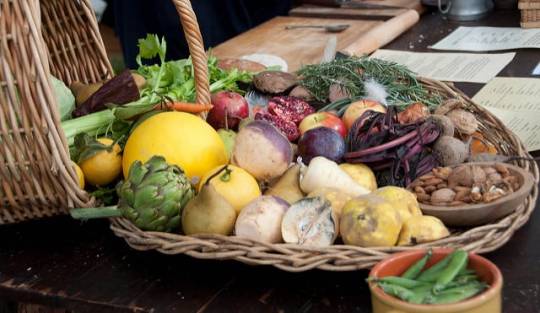
Well, two stable foods we still eat a lot today were definitely around: Carrots and peas. Especially peas were rather cheap and hence were eaten a lot. There was also at least one type of bean around in medieval Europe. Yes, only one. But horse beans were around in medieval Europe and were in fact eaten. Lentils were also quite popular.
Other than that, we also know of turnips, beets, cabbage, kohlrabi, onions and garlic being eaten. But that is not all, as there were several other types of vegetables, that are not around today that much, having been eaten. Especially a lot of root vegetables, like celeriac and parsnip for example.
But also fennel, that tends to be rather unpopular with modern people, was very much around and eaten.
One other vegetable that had some types around in Europe, was the pumpkin. Specifically, the gourd, that originated from Africa, but was cultivated in Europe rather early on.
Also there was a lot of salads and herbs, that also might be eaten as a form of salads.
But how do we know about medieval cuisine?
Another big thing that people tend to be kinda confused about, is, how we know what medieval people ate. Because, yes, at the time books were very expensive and a lot of folks could not read or write. While I will always harp on about the point that we greatly overestimate the number of completely illiterate folks in medieval times, as a lot of people were at least able to read a bit and write down the results of the harvest. But… written language was definitely not the main method of conserving information. Hence, there are only a handful of books around, that are primary texts and are collections of recipes. Most of them originate from noble or royal households, where the chefs would write down what the lord and lady of the house favored.
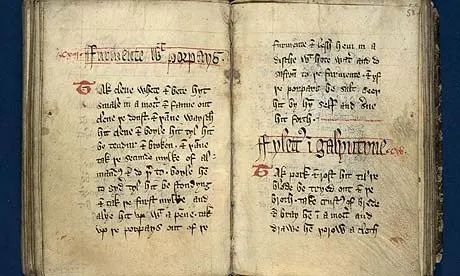
Other than that, we have a couple of letters, in which people shared their recipes.
But a lot of what we know “existed” is more from mentions within letters and diaries of “today I ate this and that” and historians then trying to figure out what that could have been, based around what we know about the foods that we know were available to the people. At times we also have findings of preserved foods. Now, of course those foods did not preserve for hundreds of years, but we can do chemical testing on what remained and hence figure out what originally had been preserved.
And of course there are pictures we have, that depict foods.
What we thankfully do have, is well documented harvests and things like ledgers from the likes of butchers and farmers based on the stuff they might have sold or given off as a form of taxes (which were often paid in goods, not coin). So, we know at least the raw materials and what might have been available.
And yes, there are also those kind of food that we know where around at ancient times and that are around in some form today. So, we can gather that they have been around the entire time. A good example for this are garlic bread and a version of pizza. We know that even in ancient times people baked bread with garlic butter and bread with vegetables, meat if available and cheese on them. It does not take a genius to figure out that bread with molten cheese on it, is pretty awesome.
Something I want to note as well is, that those recipe books we do have basically all originate from France, Germany and England, with two also originating in Italy. Medieval Europe was more than those four places. Which leads to my issue that a lot of folks tend to ignore that there were cultural differences and that, yes, we kinda are forced to rely on finds and maybe letters. (Believe me, as someone who writes about medieval Wallachia for my fics, it is a pain in the butt.)
But what did medieval people eat?
So, let me overgeneralize a bit. Because again, what you would eat in those times was dependent on where you were living and how wealthy you were. Richer people and nobility would eat meat a lot more often than less wealthy folks.

Generally poor folks would most of the time have some form of porridge for breakfast. That was: Oats cooked in water. If they could afford it, those might be cooked in milk. Maybe with honey. When it was the season, there might’ve been some fruits or nuts in there, too. But most of the times just oats in water. As oats were one of the cheapest forms of corn, they were good for that. Some people might use other corn like rye or barley softened in water as well.
If you could afford it, you might have head bread as well. For most folks it was a rye bread or rye sour dough, because rye was cheaper than wheat. This bread would not be eaten in slices, but rather eaten together with whatever was available. Maybe together with cheese. Maybe dunked in stew or soup. (Which, by the way, leads me to the fact that most taverns only served stew or soup with bread. Not “nice pork grilled over a fire” as we so often see it depicted in media.)
And yes, as a main warm meal there was stew and soup – vegetable soup for the most parts, because again: Meat was expensive. When there was meat in the soup, chances were, that It was all sorts of meats and in fact it was more likely that it would be hare or sheep, rather than pork or poultry. At times the same stew would be eaten for more than a week, with just new stuff being added, whenever it was half-empty, so you might actually get a mix of meats in there. (This was, again, also quite common in taverns, where people might just bring some stuff they had lying around and add it to the so called “everything stew”.) While it might sound disgusting to us today, it actually allowed for pretty deep flavor profiles.

Again, poor folks would often not have a dedicated kitchen or stove and rather would prepare their food over the fire place that was also used to heat the house. Which would lead to a lot of “one pot meals” as we would call it these days. And if there was meat, it often would be prepared as a larger chunk, instead of small cuts being prepared in a pan.
Of course, those were things that rich people could afford more easily. Though this did not necessarily mean nobility, but also folks like tradesmen and the likes. Who not only might have a dedicated kitchen, but also some maid to cook for them.
And there was of course the thing about spices: Medieval cuisine for the most part did not use spices, but only herbs. Because spices mostly originated in North Africa and South Asia and hence had to be traded over long distances. This would make them rather expensive, so many folks were not able to afford them. (Again: the entire colonialism affair started, because everyone wanted spices, while the Ottoman Empire controlled the spice trade.) This does, however, not mean that spice heavy recipes were unknown to medieval folks. They were expensive, yes, but we have both archeological and written evidence from meals, we would today call “curry” being prepared both in England and France.
Milk, no matter what animal it came from, would often be turned into some form of cheese, because most animals would only give milk, when it was season for their young. So, making the milk into cheese was a good way of making the milk last for longer. And yes, lots of folks knew how to make cheese. So, cheese was something that was often enough served to the side. Though dairy as well was not as common as it is today.
Wheat, again, was expensive. So, bread and other food based around wheat was more expensive than rye. Often wheat would only be enjoyed by rich folks and men of the cloth (meaning church folks). And only very rich people could afford white flour based food, while everyone else was eating food based around whole grain flour.
And yes, for the observant ones it should be obvious: Poor folks were eating a lot more healthy, than rich people were. Which led to interesting stuff like the fact that poor people often did not suffer from dental problems, even though dental hygiene was not yet a thing. Simply because they were eating better and less sweet.
Oh, and also: Most people would in fact drink alcoholic beverages (though with a lot less alcohol content than what we know today) instead of just pure water. Why? Well, because chances were, it made you less sick. And yes, also it tasted a lot better than stale water you got from a well. For most folks that was beer or ale, for richer folks wine or at least thinned wine. Except, again, in areas where there was a Muslim majority, because those obviously would not drink alcohol, so there would often be fewer breweries.
Medieval people did not eat badly
Now, let me make one thing clear, because it is a thing I tend to get annoyed by a lot: No, medieval people did not eat badly. Which was the other thing that annoyed me about MatPat’s video, given that the title card was “Medieval Food SUCKS!”, which… no, it doesn’t. It didn’t. It was different, from what we eat today, yes, but it was not bad food.
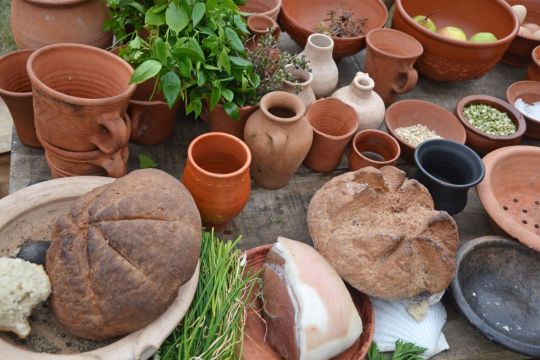
See, it is something that a lot of modern first world folks (especially white folks) are just too picky eaters and with that also kinda wasteful. We will only eat certain bits of dead animals, will not eat a lot of dead animals that are gonna die either way (heck, we have laws against eating certain animals, that are not based in any other reason but people’s emotional attachment to those animals), will not eat many vegetables that would be easier to grow and so on.
And sure, the fact that there was so little spice in medieval food, that makes it kinda… meh. But herbs can be used for those purposes, too. And yes, they can make things rather tasty indeed.
And yeah, I kinda bemoan the way we consume food today. Part of it has a lot to do with capitalism, of course. With the fact that we just do not have the time and means to grow our own food and the fact that of course, that to keep food prices low (which is necessary) but also keep the profits high, food production is plagued by all sorts of inhumanities. Be it slave labor, violence again humans (just look into the history of Chiquita or Dole) and of course the inhumane ways we keep animals.
A lot of folks do not even know how to prepare their own food properly. And do not know where it comes from. And as someone who identifies with the solarpunk culture, I just wish we could change away from that.
So, yeah, Let me just say: The MatPat video was just not that good and ignored an important part of history. Also, a lot of media depicts medieval food culture wrong, leading people to have all sorts of misconceptions about it.

Currently I am writing a fanfic about medieval cooking based around the Castlevania fandom. You can find it on Ao3! Though, yeah, the characters here are rich enough to eat spices.
And if you liked this little rant essay, maybe consider leaving me a little something on Ko-Fi!
#History#medieval cooking#medieval food#food theory#historical cooking#medieval europe#learning#education#middle ages#spain did not exist in the middle ages#white washed#white washed history#long reads#rant post#food history
114 notes
·
View notes
Text
La Bola is a classic Madrid tavern. Located on a quiet backstreet, it is painted lacquer red on the outside, with a dark wood and colored tile interior. We arrived during a busy Sunday lunch service. The place was filled with multigenerational families and loud groups of friends who, like us, were there for the jewel of the crown, the most Madridian dish of all: Cocido madrileño, a stew that La Bola has perfected in its 150 years of operation.
Cocido madrileño (“the stew of Madrid” in Spanish) is a rustic dish of chickpeas, vegetables such as potatoes and cabbage, and a variety of pork cuts, sausages and marrow bones. At La Bola it is still cooked the traditional way, layered in individual clay pots over coal. The stew is served over two courses, making for a full meal. First, the busy waiter poured the cooking liquid out of the cocido pot into a soup bowl filled with vermicelli noodles, to be eaten like a soup. The chickpeas, vegetables and meats were placed on a platter for the main course (some serve the chickpeas for a second course and the meat with veggies for third). The scene repeated itself at almost every table in the packed restaurant, with guests watching in anticipation as the waiters laid out the cocido spread.
But as it turns out, the roots of this Madrid staple, this pork-laden stew, are deep in the medieval Sephardi community of Spain. Specifically, in a Shabbat overnight stew called adafina (AKA dafina, tfina and s’khina).
To understand the dish’s amazing evolution, we need to look way back.
Muslims conquered the Iberian Peninsula in the early eighth century. They brought religious moderation to Al Andalus, in addition to new dishes, spices, fruits and cooking techniques. Since Jews and Muslims both avoid pork, their cuisines at the time were very similar.
Cooking stews overnight, over or under coal, was a technique used by Muslims while still in the Levant. But in Al Andalus, it was the Jews who were most identified with this cooking method, mainly because it was a good practice for Shabbat, when lighting fire is not allowed. The word adafina comes from the Arabic word for “hidden” or “buried,” since the dish was cooked while buried under coal, though the dish is also known as ani or calinete (“hot” in Spanish) or hamin (“a warm dish” in Hebrew, a name that was used for Shabbat dishes in the Talmud).
Adafina, just like cocido madrileño, consists of chickpeas, vegetables, meat (lamb) with the occasional addition of hard-boiled eggs (huevos haminados) cooked together at a low temperature overnight. Adafina is still prepared by Tunisian and Moroccan Jews of Sephardi descent around the world. Through the years, more ingredients were added to the pot, most notably potatoes from the new world, as well as wheat berries, sometimes tied in a cloth, and a sweet loaf of ground beef.
According to author and food historian Claudia Roden, Moroccan adafina was served in several courses, first potatoes and eggs with plenty of the soup, then the wheat and/or rice and lastly the meat with chickpeas. Just like the cocido is served in Madrid today.
The first cookbook available to us from the Iberian Peninsula is the 13th century Andalusian “Kitab Al Tabikh.” It includes six Jewish recipes, and two of them use the technique of covering the pot with another pot of coal to keep it warm. A third recipe, described as “Stuffed, Buried Jewish Dish,” is called Madfūn, an Arabic word that comes from the same root as adafina, to bury. Although the recipe is different to what we know as adafina today, the method of cooking it for a long time under coal is the same.
With the expulsion of the Jews from Spain in 1492, many left to Portugal, North Africa and the Ottoman Empire, where for 500 years they kept their prayers, language (Judeo-Spanish or Ladino) and their unique cuisine, which is why adafina is present in Moroccan homes today.
Those who stayed in Spain were forced to convert to Catholicism. To enforce the sincere conversion and prevent the conversos (converts) from practicing their Judaism in secret, the monarchy used the Inquisition, an institution that kept its devastating work well into the 19th century.
One of the ways the Inquisition spied on and convicted heretic conversos was by observing their food. They published guides with detailed descriptions of Shabbat dishes, matzah on Passover, eggplant dishes and the avoidance of pork. Interestingly, the conversos themselves, having no other resource available, used those same lists in order to learn how to keep their Jewish customs alive. Neighbors and servants reported their suspicions to the Inquisition authorities. And so adafina became one of the most incriminating dishes, punishable by cruel execution.
A letter written by an eager informer to King Ferdinand in 1516 says that “nearly all the residents of this city [Seville] smell Jews, them, their houses and the doors of their houses, because they are gluttons and pigs, and they nourish themselves with casseroles, garlic and adafinas,” as documented in Hélène Jawhara Piñer’s book “Jews, Food, and Spain.”
But if the roots of cocido madrileño are, in fact, in the Jewish Sephardi adafina, why is it full of pork?
While many conversos saw avoiding pork as the most important Jewish law to keep, others deliberately consumed pork in public in order to avoid any suspicion. “The conversos of Majorca were known as Xuetes (“xua” meaning “bacon” in Majorcan Catalan), explains Paul Freedman in his book “Why Food Matters.”
“Because their ancestors cooked and ate bacon in public to show their sincerity, but they only did this once or twice a year.”
“The one way to demonstrate that they [the conversos] now are Christian was to eat pork, so they introduced pork into the most famous dish they ate, adafina,” Mara Verdasco Arevalo, La Bola Tavern’s manager and owner, told me in an email.
For hundreds of years after the expulsion, Spain had no Jewish community and the Jewish roots of many staples of Spanish cuisine were all but forgotten. In recent years, Spain has been making an effort to revive its elaborate Jewish history. Spanish governments have worked to renew Jewish quarters around the country, began issuing Spanish passports to Sephardim and opened new Jewish museums. Hopefully a thorough research of Spain’s culinary heritage, acknowledging the Muslim and Jewish roots, will be part of it.
11 notes
·
View notes
Note
hey there pyporapy
What's the favorite food of your oc's? And also, what is the food that they ABSOLUTELY despise?
Hello!!!
Both Grisha and Viktoria Really like soup (solyanka and shchi respectively), but it’s kind of because of different reasons. Grisha needs whatever pick-me-up he can get so he likes his sour soup, and Viktoria prioritizes reliability, so if she can make her soup fairly easily and freeze it to take wherever she goes she will do that. So, that being said, Grisha doesn’t like anything Too bland and Viktoria still can’t get used to meals that are too elaborate.
By virtue of being 100% British, Laura hasn’t exactly won the cuisine lottery (/j), but she really enjoys Scottish cuisine and, specifically, cullen skink, aka smoked haddock chowder (hehe, more soup). It’s quite a simple dish and it’s actually more of a starter, but what she likes is precisely its simplicity and good taste. On the other hand, and not to disgrace her home city, but Liverpool cuisine is…… interesting….. so, she can probably eat it, but she would rather not doing so.
In Felix’s case, he has Actually won the cuisine lottery by virtue of being ecuadorian (🙌🦅🔥🇪🇨), but even with all the dishes that ecuadorian cuisine has to offer, he prefers the little things in life, so patacones are his favorite. You can do just about anything with verde, and you can make it be the only thing you eat the rest of your life (even though you probably shouldn’t…), but in the UK that shit is expensive!! So patacones can be an actual delicacy!!! And he treats them as such!!! They’re pretty reliable too; they’re quick to cook so you cook a shit ton and you can take them anywhere, eat them with anything, and they can be quite fulfilling. He’s the type of person to try any food put in front of him but if I wanted to say he didn’t like a food….. he looks like he doesn’t like fish. Idk he just has that vibe…
I’m gonna be honest I can’t picture Cain eating. Either he just photosynthesizes or has a cigarette and bong water for breakfast idk. If he’s ever desperate enough he probably just eats a handful of communion wafers, pretends he’s eating paper (which tbh isn’t That hard), and moves on with his life. In all seriousness he just has the vibe of someone that doesn’t play about breakfast. Does that make sense.
And Gabrijel…… he probably eats some weird expensive shit unbeknownst to all of us normal people with real tastebuds. Because of his Czech roots, he really likes pork, but he can probably only eat like. Iberian pork. Nothing more and nothing less. Also if I gave him ají he’d probably die but that’s another topic
Thank you for your ask, this was fun to do!!! I’m hungry now hehehe
#never been soup’s biggest fan but my little research has me wanting to change that…. also…. am hungry….#i’m paranoid so if by any chance this is unreadable lemme just tell you…its 2AM there’s no energy and I haven’t slept so. sorry abt that…..#pyporapyask#pyporapy oc
5 notes
·
View notes
Text

Live Alaskan Percebes 🐚🦐🦐🐚
AKA Gooseneck Barnacles, these wild looking shellfish are as esteemed and elusive as anything we carry. Tough to find, difficult and dangerous to harvest, and often disappointingly demure, these jumbo and juicy catches will turn anyone into an admirer.
Revered in Iberian cuisines, Barnacles have a tender, smooth texture that is similar to razor clams, a comparison echoed in their flavor, somewhere snugly between clams and shrimp.
The rocky, frigid seascape off the Alaskan coast is owed much of the credit for how beautiful these particular selections turn out, and the rest belongs to the talented, knowledgeable fishers who astutely time their treks among the boulders to bring these Barnacles home.
7 notes
·
View notes
Text
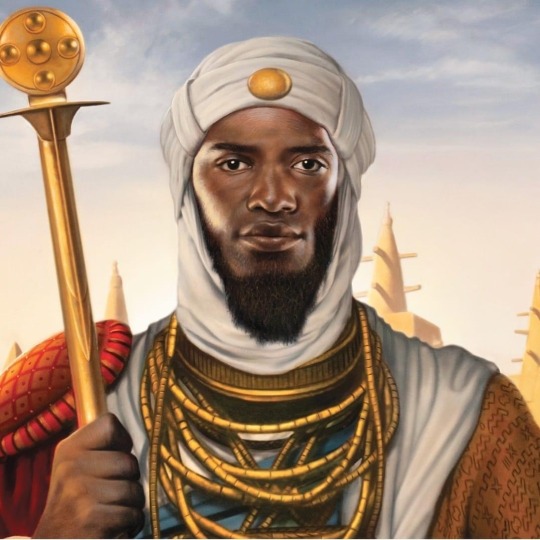
White people ask, why has there never been a powerful African nation like Rome, Persia, or the Aztecs?
Wait, seriously? “Never been a powerful African nation," says who exactly?
I’d presume you’ve never heard of some of these before:
ZULU KINGDOM. They crushed the British in their first battle and wrecked havoc on the Boers.The Zulu Kingdom, sometimes referred to as the Zulu Empire or the Kingdom of Zululand, was a monarchy in Southern Africa that extended along the coast of the Indian Ocean from the Tugela River in the south to Pongola River in the north.
MALIAN EMPIRE. Home to one of the richest Kings in human history. The Mali Empire was an empire in West Africa from c. 1226 to 1670. The empire was founded by Sundiata Keita and became renowned for the wealth of its rulers, especially Mansa Musa. The Manding languages were spoken in the empire.
KINGDOM OF AXUM. One of the centers of African civilization centuries before any European civilization. The Kingdom of Aksum, also known as the Kingdom of Axum or the Aksumite Empire, was a kingdom centered in Northeast Africa and South Arabia from Classical antiquity to the Middle Ages.
ANCIENT EGYPT. One of the centers of civilization. The civilization of ancient Egypt began in the Nile River valley of northeastern Africa. Ancient Egypt was one of the world's first civilizations. It is also one of the most famous civilizations in history.
KINGDOM OF KUSH. Which has more pyramids than Egypt by the way. The Kingdom of Kush was an ancient kingdom in Nubia, centered along the Nile Valley in what is now northern Sudan and southern Egypt. The region of Nubia was an early cradle of civilization, producing several complex societies that engaged in trade and industry.
THE KINGDOM OF DAHOMEY - This was a West African kingdom located within present-day Benin that existed from approximately 1600 until 1904.
THE KINGDOM OF BENIN - Also known as the Edo Kingdom, or the Benin Empire was a kingdom within what is now southern Nigeria. It has no historical relation to the modern republic of Benin, which was known as Dahomey from the 17th century until 1975.
THE GHANAIAN EMPIRE - Also known as Wagadou (Arabic: غانا) or Awkar, was a West African empire based in the modern-day southeast of Mauritania and western Mali that existed from c. 300 until c. 1100. The Empire was founded by the Soninke people, and was based in the capital city of Koumbi Saleh.
KONGO KINGDOM. Prior to the Portuguese arrival, Kongo was developed with a large commercial network. The kingdom melted copper and gold and traded it with products such as raffia cloth and pottery. The kingdom was a superpower and center of trade routes for ivory, copper, raffia cloth, and pottery.
ASHANTI EMPIRE. One of the most powerful and wealthiest states of the 18th-19th century.
The Asante Empire, today commonly called the Ashanti Empire, was an Akan state that lasted between 1701 to 1901, in what is now modern-day Ghana. It expanded from the Ashanti Region to include most of Ghana as well as parts of Ivory Coast and Togo.
The various African Kingdoms and empires were quite well known in Imperial Persia. The Sassanid & Nubian Kings in particular were quite familiar with each other. In fact, Persian traders and travelers extensively traveled the coastlines of modern-day East & North Africa bringing back various cuisines, spices, technologies, and in certain instances; slaves and laborers. Many Africans who came to Iran even became highly skilled soldiers and commanders in the Imperial Sassanid Army.
Moors is a term generally used by Europeans to describe the Muslim people of North Africa and the Iberian Peninsula during the Middle Ages. Between 711 C.E. and 1492 C.E. Muslim people of African descent controlled parts of Iberia which consist of modern-day Spain and Portugal, they ruled and civilized Europe.
Since the Moors ruled Spain for about 800 years, they had time to bring scientific techniques to Europe such as the astrolabe, a device to measure the position of the planets and stars. There was scientific progress in chemistry, mathematics, philosophy, astronomy, physics, and more.
Africans share strong historic ties with Turkey as the Ottoman Empire, its predecessor state, not only recruited tens of thousands of Africans into its army but also employed a large number of them in both the royal court and palace.
67 notes
·
View notes
Text
PT.2

1) Jean Baker: "Australia's strongest goalkeeper. He is the true Poseidon."
2) David Waterman: "Originally an Aussie rules player but was longing to participate in the tournament."
3) Shine Beach: "He cannot stand it when a sandy beach is dirty and picks up garbage every day."
4) Karmei Kohler: "He keeps art handed down from ancient times in Australia as a tradition."
5) Clark Cain: "Eager to protect the rare creatures that live in Australia."
6) Sully Princeton: "A genius at finding the whereabouts of rare minerals. He seems to know by just looking at the terrain."
7) Matt Angle: "Patience strengthened by spiritual discipline is the key to this player's power."
8) Surf Wyndhas: "A worldwide master at surfing. He waits for good waves to always look at the sea."
9) Niese Dolphin: "The brilliant prince of the sea. He is the man to lead Australia."
10) Reef Hamilton: "He is a master at catching tropical fish in coral reefs by skindiving."
11) Joe Jones: "Attacks at once when it comes to opportunities to quietly creep up on the opponent."
12) Quincy Horst: "He travels the wilderness still looking for a new gold mine."
13) Holly Summers: "Although he has a part-time job as Santa every year he envies the cold areas."
14) Clive Scissors: "He is good at cutting through opponents with the use of his sharp arm."
15) Daniel Barrack: "He is working hard to be the best in the world of horse meat that has been kept at his home in Australia."
16) Bruce Marlin: "Does his footwork with a spring characteristic of a kangaroo."

1) Fermin Sanchez: "Like a bull at a matador, he charges straight through the crowd to grab the ball."
2) José Costa: "He's an experienced and tenacious mountain biker."
3) Rafael López: "He's a great flamenco dancer. Girls are lining up for a chance to dance with him."
4) Antonio Galius: "He's always making sketches for abstract paintings, like Picasso."
5) Querardo Naval: "He's trained to be a matador since he was a child, but he hates hurting animals."
6) Joan Nadal: "He eats five meals a day to keep his strength up when he's travelling overseas."
7) Igor Freire: "He's an avid consumer of paella, but he's really fussy about the type of rice."
8) Mikel Pereiro: "His hobby is making sailing boats. He's assembling an invincible armada in his bathtub."
9) Pedro Moreno: "He's raising a black Iberian pig at home, in the hope of producing tasty ham."
10) Samuel Mayo: "This plucky Pamplonica dreams of one day showing his mettle at the Running of the Bulls."
11) Davi Peroqui: "He's fiercely proud of Spanish football, and doesn't hide his desire to take on the world."
12) Juan Zubeldia: "Everyone is bewitched by his virtuosic skill at flamenco guitar."
13) Isaac César: "An opportunist on and off the field. If he sees a beautiful girl, he'll try to charm her."
14) Laudelino Sastre: "Like Don Quixote, he acts rashly without considering consequences."
15) Carlos Arroyo: "He hopes to raise architectural wonders like the Sagrada Familia."
16) Federico Rubiera: "He'd like to have a go at synchronised swimming, but he can't find a boys' team."
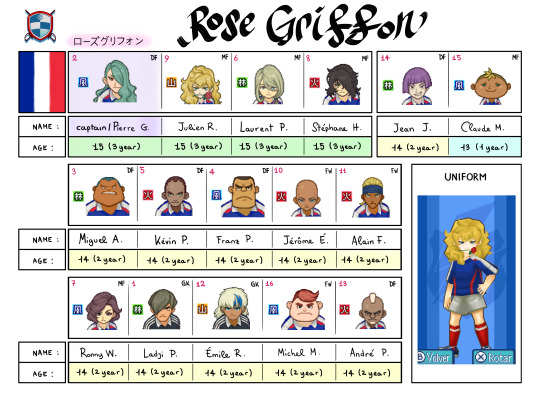
1) Ladji Paara: "Always draws pictures in Montmartre. He wants to be called the pioneer of soccer pictures."
2) Pierre Godin: "His motto is: always play with style and grace, no matter who your rival is."
3) Miguel Arron: "Despite his appearance, this boy has a gift for French cuisine."
4) Franz Poujol: "He wants to make a building more famous than the Eiffel Tower and the Arc de Triomphe in Paris someday!"
5) Kévin Pinot: "He wants to apply Napoleonic battle strategies on the playing field."
6) Laurent Pérec: "He always spends his days off relaxing at outdoor cafés."
7) Ronny Weiss: "As one of France's best boy models, he is in high demand for fashion shows and photogravures."
8) Stéphane Henno: "A young genius artist of chansons. All of his CDs are big hits!"
9) Julien Rousseau: "He likes to play with a rose clamped between his teeth. Very pretentious."
10) Jérôme Éloi: "Due to having a keen sense of smell, this person is capable of blending the best perfume."
11) Alain Failliot: "The son of a bicycle repairman. He'd like to help out at the Tour de France one day."
12) Émile Razzano: "He considers himself a devotee of French cinema and has a large collection of DVD movies."
13) André Panzo: "He likes nineteenth-century philosophy, but his friends do not understand him when he explains it."
14) Jean Jetin: "Although he has not yet made the leap to fame, this guy is a fashion prodigy."
15) Claude Moreau: "His baguettes are known throughout France. Mmm … They are delicious!"
16) Michel Morin: "He has a gift for gardening, especially if it's about cultivating life."
9 notes
·
View notes
Text

Vegan Paella (Gluten-Free)
#vegan#gluten free#lunch#dinner#spanish cuisine#iberian cuisine#rice bowl#paella#fennel#rice#celery#carrots#mushrooms#seaweed#parsley#onion#garlic#green peas#tomatoes#paprika#saffron#zucchini#olives#artichokes#wine#olive oil#black pepper#sea salt#eat the rainbow
50 notes
·
View notes
Text
hello once again, your friendly neighborhood spaniard is here once again to comment on the references to spanish culture i'm seeing while playing scarlet and violet!
here's my previous post on this! and i wanted to tell you that as per this post, i've officially seen all the cities and towns in paldea which means there's not really much else to explore, these posts are coming to an end :(
anyways, let's start
if montenevera is based on the pyreenees, it makes sense that the area around the fairy squad camp is modeled around another part of northern spain, in this case asturias and more precisely the picos de europa national park, arguably the prettiest part of the country (i've never been there but everyone that has been says asturias is the prettiest so who am i to disagree). just like in the game, it's a beautiful prairie place next to big scary mountains and right by the sea! however, there are no marshy areas in asturias; the three largest ones in the country are the ebro delta [pic 6], the valència albufera [pic 7], and doñana national park [pic 8]. i would say the in-game one is probably referencing the ebro delta, only based on location, as the other two are more south.






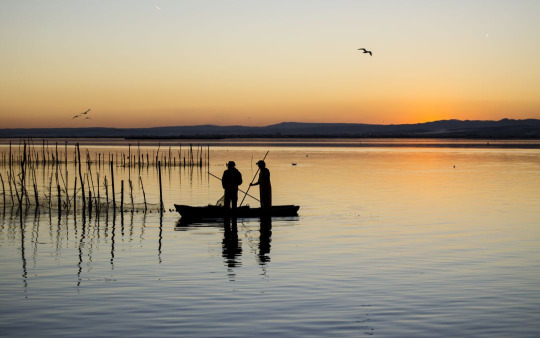

another fun thing about this area is that if you go swimming in the north coast you'll be able to find the tynamo evolution family, based on lampreys! lampreys have been fished in galicia as early as the roman times, with unique rock constructions built in the rivers called pesqueiras used to specifically catch them. they are part of the traditional galician (and portuguese!) cuisine, and they are similar to anchovies, one of the most popular dishes in another northern iberian area, cantabria.




finally, there's the last town of the game that i had yet to see, alfornada! one fun fact about me is that my favourite architectural style is mudéjar, so i was absolutely stoked to see a whole town built in that style!!! for everyone who doesn't know what mudéjar is, or why arabic-inspired music sounds all throughout the town, i'm gonna summarize 700 years of story really quick: after the western roman empire fell, the visigoths took over the peninsula, and things were chill for a bit until 711, when the moors invaded the peninsula. by 722 all but asturias was now part of the umayyad caliphate (we call moorish iberia al-andalus for short), but the asturians defeated the moors in the battle of covadonga and from there on the reconquista started, a centuries old war between christians and muslims in iberia that lasted until 1492, when the last remnants of al-andalus were defeated. as you could imagine this conjured up a very complex social landscape and a unique cultural makeup that still lasts till this day. within all of that, there were three groups we had to study in class and were a pain in the ass to differenciate (i had to search what each one were for this post): muladíes (local iberians that converted to islam and lived in al-ándalus), mozárabes (christians and jews that lived in al-ándalus), and mudéjares (muslims living in the iberian christian kingdoms). mozárabes and mudéjares had to pay extra taxes and live in special quarters of the cities, but apart from that they all lived peacefully which is neat. both groups had their own art styles, but the mudéjar art and architecture was the most prominent of the two, and even experienced a renaissance in the 19th and 20th centuries with the neo-mudéjar style. it basically mixes muslim and christian styles and it's so good i love it with all my heart.
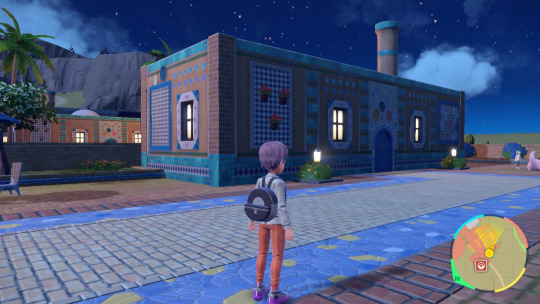
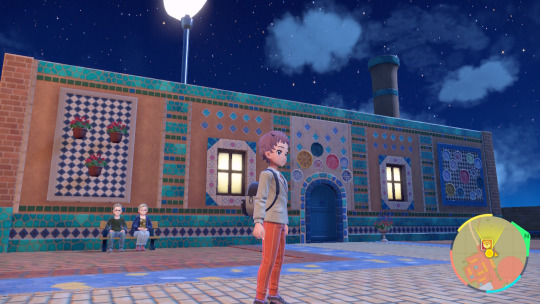


also, alfornada is known for its pottery, and ceramics are one of the traditional spanish arts, there are still a lot of ceramic workshops in rural areas where you can find handmade ceramic. and the plates displayed in alfornada are also very popular in the country, every grandma has at least one set very similar to the ones in the game lol. one particular place associated with this type of ceramic is talavera de la reina, in toledo. as our ex-president once said 'the talavera pottery is a big thing, in other words, it is not' a small thing' (it doesn't make sense in spanish either <3)

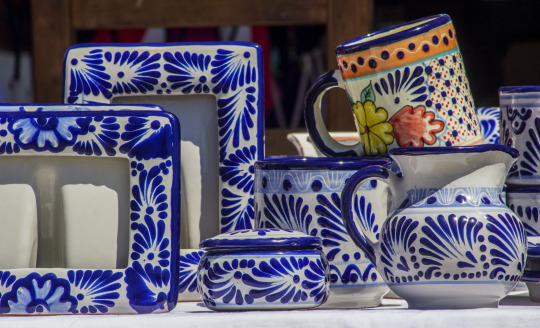


you thought i was done with this town huh? surely there isn't any more references right??? right??? well, we're just getting started. another interesting feature of alfornada is all the fountains in the streets, which, alongside with the music and the mudéjar style, made me realise what was the biggest inspiration behind this town: the alhambra, the palace complex of the kings of the nasrid kingdom of granada, the last stronghold of al-andalus and imo the most incredible human construction ever (it's a unesco world heritage site as well). even the setting of alfornada corroborates this; the alhambra sits on the top of a mountain, right by the sierra nevada mountain range, one of the tallest of the country (in fact, the highest peak in iberia, the mulhacén, is located there). one of the main defining features of the alhambra was the usage of water, with tons of canalization through the complex and lots of gorgeous fountains.


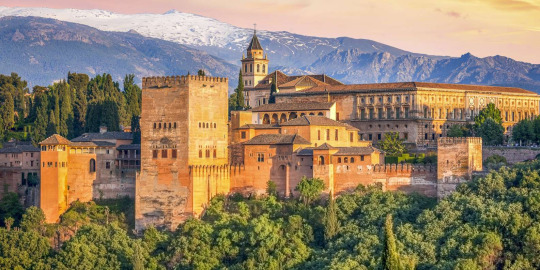


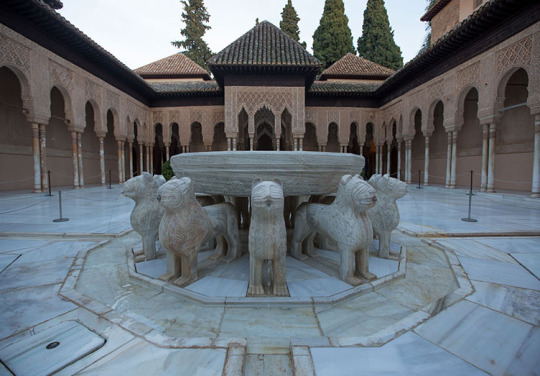
we're almost done, hold up (this is the first post where i had to cut some images cause i had reached the 30 pic limit oops). just north to alfornada, if you continue to climb up the mountain, you'll reach a ruins area. there are tons of these in paldea, and it makes sense, there's a ton of ruins everywhere in spain as well, but these are special due to its location, its context, and the arch and colums that can clearly be seen. i'm pretty sure this is a direct reference to medina azahara, the palace complex of the caliphate of córdoba, that now lies in ruins (another world heritage site). i visibly gasped when i got here, it shows how much thought the pokemon company put into this game :)
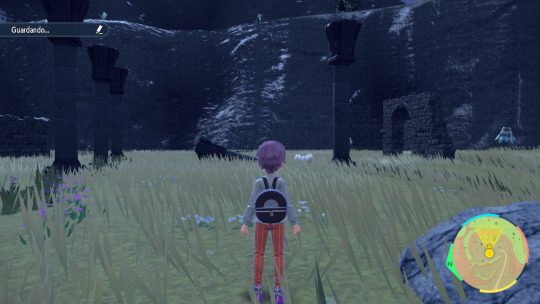

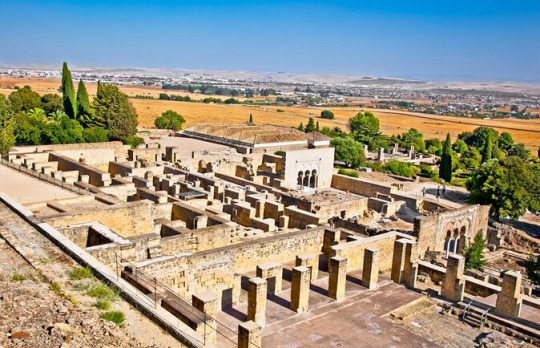

and that was all! i hope you liked it :)
here's next post !!!
#pokemon#pokemon scarlet and violet#pokemon sv#pokemon spoilers#pokemon sv spoilers#yeah i love alfornada :)#also like#the name#-ada as in granada#and in spanish the town is alforno town#al- is the arabic article that can be found in tons of spanish words#like alfar (pottery factory / workshop / atelier?)#and forno is just the old spanish way of writing horno (oven / furnace)#so yeah#probably the most detailed city in the region
39 notes
·
View notes
Text

Here are some facts about the Moors in Europe: They ruled Spain and Portugal 754 years before the fall of the Mali Empire.
1. The Moors brought a wide variety of new fruits and vegetables to Europe.
The Moors brought many new fruits and vegetables to Spain and Europe that were considered exotic novelties at the time. These products included pomegranates, peaches, lemons, oranges, saffron, cotton, rice, silk, sugar cane, and a variety of other fruits and vegetables. Even though they are commonplace today, the Spanish at the time considered these objects to be almost alien. Several centuries later, they are still important components of Spanish food and production.
2. The Moors Developed Far More Rapidly Than Medieval Europe
The Arabs had an advanced civilization known for its architecture, science, mathematics, and exploration when they conquered the Iberian Peninsula. When the Moors arrived in Spain, they brought with them architectural innovations that astounded European stonemasons. The Alhambra, a fortress and palace complex in Granada, Spain, is one of the most stunning examples of Moorish architecture. Its construction started in 1238, and its grandeur and beauty far outstripped those of any comparable palace. It is still one of the palaces of the Islamic world that has been preserved the best today.
3. Chess Became Popular Across Europe Because of the Moors
Chess has been played for more than 1,500 years, but the Moors brought the game in its present form to Europe. The Moors brought chess to Spain after it had spread from India to the Arabic world. It spread through Europe's courts and society very quickly after it gained popularity. Chess was a well-liked game of strategy and endurance in medieval Spain. Chess was first mentioned in writing in Spain in the Catalan Testament in 1010 AD.
4. The Moors Took Their Hygiene Very Seriously.
A Moor, according to a catchphrase, "would rather go without bread than without soap." The Moors were known for their love of cleanliness. Due to their customs and the demands of their religion, the Moors valued cleanliness and often bathed; in the Moorish town of Cordoba, there were about 900 public baths. This made it possible to maintain proper hygiene at a time when plumbing and running water were still uncommon. Some sources also assert that the Moors introduced some kind of soap to Europe, ushering in a new era of hygiene.
5. The Moors Placed a High Value on Education
The Moors placed a high value on education and made sure that everyone in their realm had access to it. This was in stark contrast to medieval Europe, where education was only available to the richest nobles and clergy and where 90% of the populace was still illiterate. In fact, there have even been instances of European Kings who are illiterate. The Moors founded 17 prestigious universities in Spain, including ones in Cordoba, Malaga, Granada, Seville, Toledo, and Almeria.
6. Many Moorish Words Are Still Used Today in Spanish and English
The Moors introduced new ideas and words to Europe after they arrived, and these quickly assimilated into the common language. Up to 4,000 words in the Spanish language have Arabic roots, including algebra, checkmate, and influenza. Cipher, alcohol, chemistry, typhoon, orange, alkaline, cable, and nadir are additional examples.
7. The Moors Were Very Resourceful
The old Roman irrigation systems that the Moors discovered in Iberia had great potential, so they quickly adopted, improved, and revived them. This increased agricultural productivity and boosted the economy. Additionally, they were able to grow new crops they had brought, including figs, dates, apricots, lemons, and oranges. Thanks to the Moors' creative irrigation methods, Spain quickly rose to become one of Europe's top producers of crops.
8. The Moors brought significant Changes to Spanish Cuisine
For Europeans, spices were an uncommon commodity, and their cuisine was frequently regarded as bland. By bringing over hundreds of unusual spices, fresh recipes, and cutting-edge cooking techniques, the Moors altered that. We still eat a variety of wonderful dishes as a result of this culinary revolution. The spice markets of the Moors were renowned for their variety and provided options for chefs of all types. These medieval markets must have had the most amazing sights and smells.
#moors#mali#arabs#history#spain#portugal#europe#cuisine#food#spaintravel#lonely planet#architecture#good vibes#vibes#lifestyle#style#mood#aes#aesthetic#aesthetics
7 notes
·
View notes
Text
Character Info Sheet
Name: Rotgut
Name meaning: literally just means putrified intestines. Shocker I know /j
Alias(es)/nicknames: La Tripa Podrida (basically his name's meaning but in spanish), Gut, Lust, the roach, little old man, The Thing below Barcelona (by spanish news articles), the cockroach man 'el hombre cucaracha' (by spanish news articles again).
Etchnicity: arab, european hispanic (Iberian Peninsula).
One picture you like best of your character:
Sorry y'all I'm gonna have to break the rules here because I can't just choose ONE picture I like best😔 here we go:

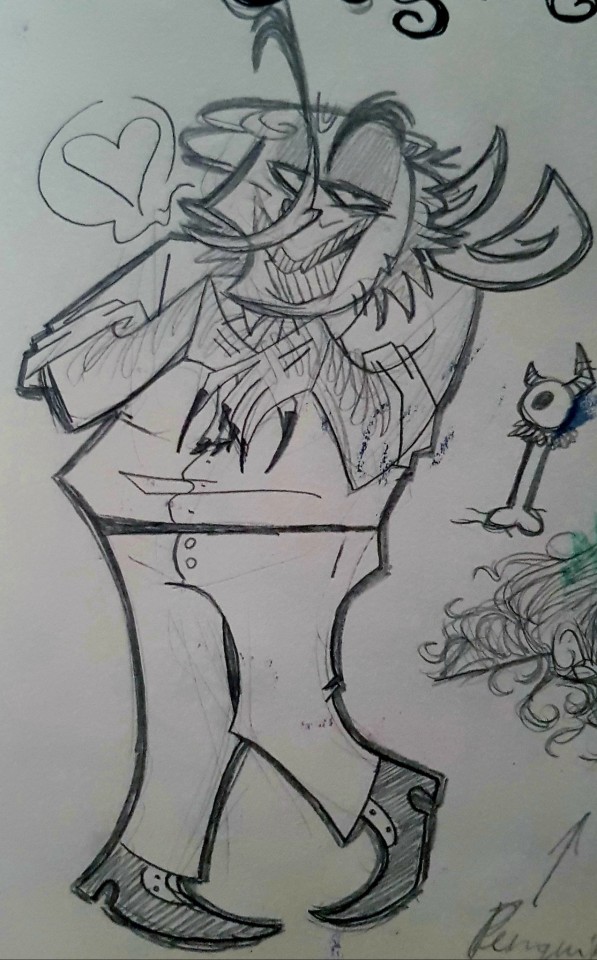

[First (1) image of Rotgut smiling mischievously is not the mun's art; it is a part of an art trade with the artist @crazy-eyed-doggo on Instagram ; second (2) image of Rotgut has been drawn in an exaggerated cartoonish style to re-imagine what the character would look like if he were a villain in shows like Powerpuff Girls/Billy&Mandy ; third (3) image of Rotgut is directly referencing this meme video. Translation: "and in return, you sign your ass, over to me." ; fourth (4) is a video of Rotgut introducing himself, with two drawings put together featuring his voiceclaim.]
Three h/cs you've never told anyone:
Rotgut enjoys crossdressing! He's curious to experiment with his own gender sometimes, either that or he just wants to feel pretty in a different look. (It's one of those rare cases where he will shower and clean himself up NOT because he's expecting to get laid lol)
Rotgut has collected a good amount of objects and trinkets during his 800 years of life. From old coins that you'd find displayed in a museum today; to ancient books (diaries or bibles), jewelry and clothes.
Sometimes he will go on for so long being unclean (we're talking decades) that actual fungi will start to grow on his body/clothes, specifically stinkhorn mushrooms.
Three things your character likes doing in their free time:
Sex and reading porn aside (to the surprise of absolutely nobody) Gut enjoys watching soap operas and reading classic tragic romance books. (William Shakespeare would be his favourite author in this case)
Playing with marbles. Always brings a bag with him if he's going on a trip!!
Try new recipes while cooking. He likes to expand/improve his cuisine. Sometimes asks Cornelius for guidance or tips.
Eight people your character likes/loves:
His kids, all 30 of them but for the sake of this dash game we will assume that counts as one <3
Himself ofc.
August. (his plague bestie!!)
Edgar the Bug (Men in Black)
Jeremiah.
Taryn.
Cornelius/Versy.
Captain Josep Frascona.
Two things your character regrets:
(During moments of self-awareness) he regrets the person he's become now. He knows his behaviour is unlikeable and indecent, because of this ofc most everyone around him hates him or is scared of him- which leads him to not being able to bring his kids out in public (or alternatively, he gives them a bad reputation when they become adults because of who they're related to) because he's scared they might get hurt as a result of people who hate him; he knows it's his fault for this outcome, but he hates everyone around him (that aren't his children) and just refuses to let go. He resents humanity for how much he has been pushed around, mocked and hurt physically in the past for just existing. He doesn't think anyone is worthy of recieving genuine kindness because deep down they're all just as disgusting as he is. This leads to ego and self-importance that makes him feel superior to others because he's not scared of showing just how revolting one can be + he's not human anymore + he's immortal + he can control/speak to hoards of cockroaches.
He also regrets having placed his distaste for humanity so high he's passed it down on his first generation of children. For the most part, this has caused a few of his children to distance themselves from him, like for example Judith and Kolvenik, which hurt him deeply. Kolvenik flat out blames his father and his hatred for humanity as to why he's developed his genetic disorder that has caused him to permanently shed off his human disguise as he got older (which is completely incorrect just to clarify; how Rotgut feels towards mankind has nothing to do with Kolvenik's genetic issue, he just hates and resents his father mostly as a form of projecting his own self-hatred living as a humanoid bug monster that can't have a human form).
Rotgut tries to better himself non-stop when it comes to raising his newest kids, because he wants to see them be happy and make friends and connections, be likeable and be liked by others regardless of what species they are, unlike him. This makes him a bit hypocritical since when he's on his own, he openly goes back to his old ways & antics- with his kids however he just kind of puts on a mask.
Two phobias your character has:
Philophobia -> fear of genuinely falling in love.
Athazagoraphobia -> fear of being forgotten by loved ones/forgetting someone important to him.
Tagged by: @frostcorpsclub
Tagging: ALLLLLL of you👈🤨
#from my mouth to yours ( rotgut )#mi amor ( rotgut aesthetic )#roots from the past ( oc info/backstory )#dash games.
2 notes
·
View notes